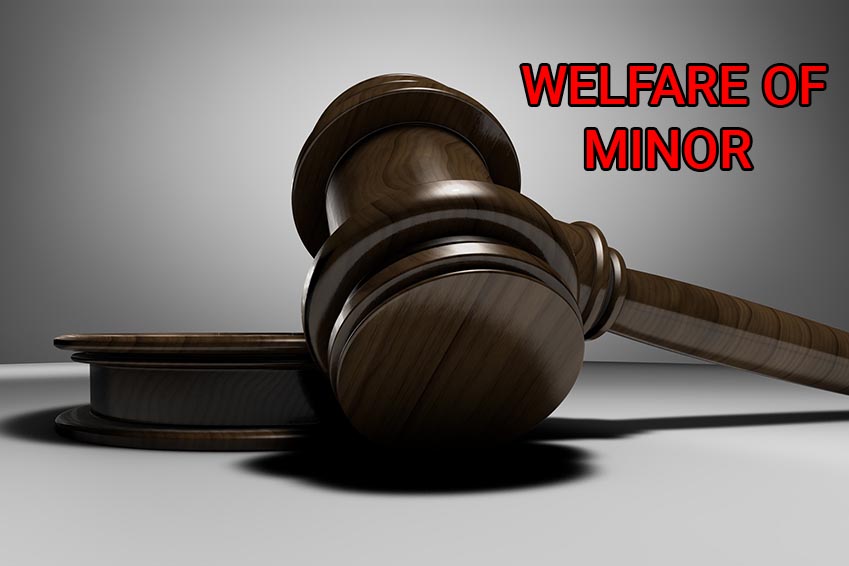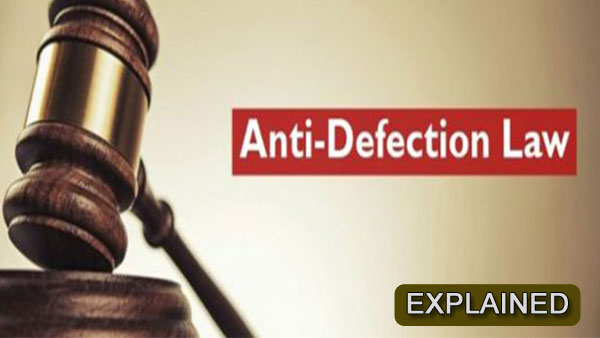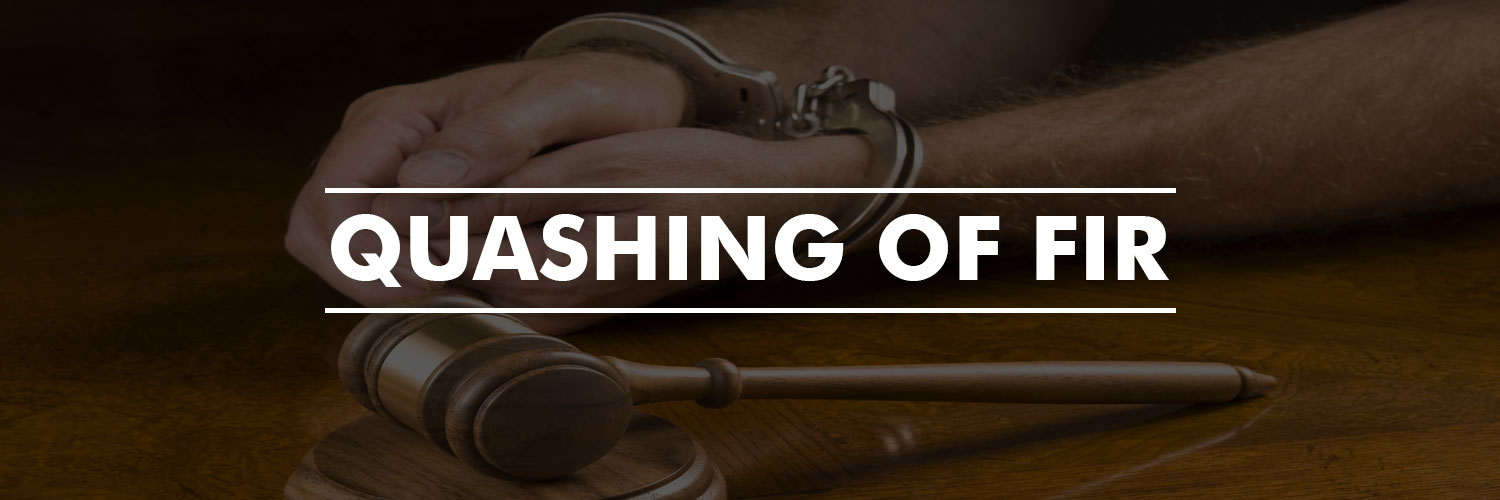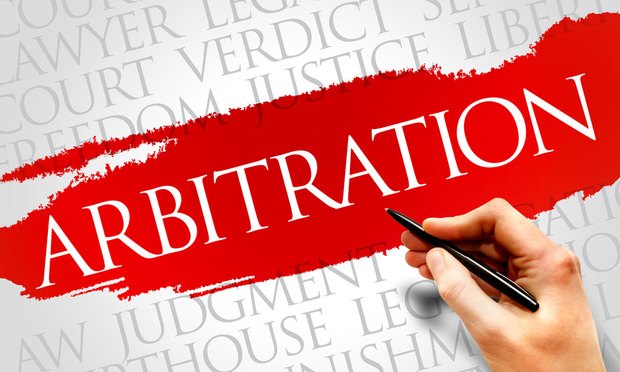Anti-Defection Law – Tale Of The Notice Which Irked Rajasthan Political Crisis
The Rajasthan political crisis has once again brought the Anti-defection law to the fore. The issue boiled over with the Speaker’s three day show cause notice to the MLAs premised on the ground that the refusal to attend party meetings as per the party whip directive attracts defection under Para 2(1) (a) of the Tenth Schedule. In this backdrop, this piece attempts to examine the following substantial questions of law related to the Tenth Schedule:
• What amounts to voluntary giving up of membership under the Tenth Schedule?
• Whether the show-cause issued by the Speaker can be declared illegal merely on irregularity of procedure?
• Whether the High Court can scrutinize the Tenth Schedule for being violative of Article 19 of the Constitution?
• What is the scope of judicial review with respect to the order issued by the Speaker under Schedule X?
The famous “Aaya Ram Gaya Ram” case wherein excessive political horse trading, multiple floor crossing and counter horse trading were exercised by the members of the Haryana Legislative Assembly resulting in the dissolution of the Haryana Legislative Assembly triggered serious concerns about the lacunae in the Constitutional provisions for regulating such defections and serial turncoat politicians.
With an attempt to regulate such defections, the 52nd Constitution Amendment Bill based upon the recommendations of Y.B. Chavan Committee was introduced in the Lok Sabha. The proposed Bill was accepted and was inserted vide 52nd Constitutional Amendment Act, 1985.
The 52nd Amendment Act changed four Articles of the Constitutions i.e. 101(3) (a), 102 (2), 190 (3) (a) and 191 (2) and inserted the Tenth Schedule in the Constitution. The Tenth Schedule is often referred as ‘Anti Defection Law”.
The Hon’ble Supreme Court in the case of KIHOTO HOLLOHAN v. ZACHILLU observed that the purpose of the Schedule 10 “is to curb the evil of political defections motivated by the lure of office or other similar considerations which endanger the foundation of democracy. The remedy proposed is to disqualify the Member of either House of Parliament or of the State Legislature who is found to have defected from continuing as a member of the House.”
As stated, the provisions in Anti-Defection Law are intended to strengthen the Indian Parliamentary Democratic fabric by curbing the unprincipled and unethical political defections. Further, the law seeks to recognise the practical need to place the proprieties of political and personal conduct above a certain level which in reality has fallen into a morass of personal and political derogation.
The Schedule 10 lays down the process by which legislators of both the Parliament and State Assemblies may be disqualified on grounds of defection by the Presiding Officer of a Legislature (the Speaker). The grounds for defection are mentioned under Para 2 of the Schedule and the power of the Speaker to disqualify a member is mentioned under Para 6 of the Schedule. It is relevant to note here that as per Article 191 of the Constitution “a member is deemed to be disqualified for being a member of the Legislative Assembly if he is disqualified under the Tenth Schedule”.
According to the provisions of Schedule 10, a legislator is deemed to have defected under the tenth schedule if he, expressly or impliedly, voluntarily gives his membership or when he votes against or abstains from voting against the whip issued by his political party.
It is germane to mention that in India, the issues for the Parliamentary Democratic Form of Governance and the role of Political Parties were dealt by the Hon’ble Supreme Court of India. In Kesavananda Bharati vs Union of India1, it was observed that “Further a Parliamentary Democracy like ours functions on the basis of the party system. The mechanics of operation of the party system as well as the system of Cabinet Government are such that the people as a whole can have little control in the matter of detailed law-making.” on practically every issue in the modern State, the serried millions of voters cannot do more than accept or reject the solutions offered. The stage is too vast to permit of the nice shades of quantitative distinctions impressing themselves upon the public mind. It has rarely the leisure, and seldom the information, to do more than indicate the general tendency of its will. It is in the process of law-making that the subtler adjustments must be effected.” (Laski: A Grammar of Politics, Fifth Edn., pp. 313-314).”
Voluntary Giving Up Of Membership
Para 2(1) (a) of the Tenth Schedule states that a member of a House belonging to any political party shall be disqualified for being a member of the House if he has voluntarily
given up his membership of such political party. The term ‘voluntary resignation of membership’ has not been defined under Schedule 10 of the Constitution. However, the Hon’ble Apex Court, in case of RAVI S. NAIK v. UNION OF INDIA, well explained the scope and extent of Para 2(1) (a) and observed that “The words voluntarily given up his membership” are not synonymous with “resignation and have a wider connotation. A person may voluntarily give up his membership of a political party even though he has not tendered his resignation from the membership of that party. Even in the absence of formal recognition, an inference can be drawn from the conduct of a member that he has voluntarily given up his membership of the political party to which he belongs”.
The term ‘voluntarily resignation’ is of wide connotation, thereby the application preferred before the Speaker under Para 2 (1) (a) and the respective State Disqualification Rules has to be determined according to the facts and circumstances of each case. The Speaker while deciding upon the issue of defection under Para 2 (1) (a) i.e. due to ‘voluntary resignation of member’ is empowered to examine the factual matrix and evidences procured from media reports, video clippings, newspaper reports etc.
Further, the burden of proof that there was no intention to give up his membership is on the legislator against whom such proceedings have been initiated.
Irregularity Of Procedure
In recent times, the Hon’ble Courts of the land have been made to examine the show-cause notices issued by the Speaker under Disqualification Rules whereby, he had given opportunity of less number of days to the non-applicants than as provided under the Rules.
It is relevant to note here that the Disqualification Rules are framed to regulate the procedure to be followed by the Speaker for exercising the power conferred upon him under Para 6(1) of the Tenth Schedule. The Disqualification Rules are, therefore procedural in nature and any violation of the same would amount to an irregularity in procedure which is immune from judicial scrutiny.
Further, the Hon’ble Apex court in the case of Dr. MAHACHANDRA PRASAD SINGH v. CHAIRMAN, BIHAR LEGISLATIVE COUNCIL & ORS.., observed that the purpose and object of the Disqualification Rules is to facilitate the job of Speaker in discharging his duties conferred by Para 6 and thereby, the Rules being in domain of procedure are intended not to frustrate or obstruct the holding of inquiry by introducing innumerable technicalities but to facilitate the same. Hence, a mere irregularity in the procedure cannot make the order of the Speaker under Para 6 of the Tenth Schedule amenable to the writ jurisdiction of the courts and cannot be declared illegal merely on the basis irregularity in procedure.
Right To Dissent And Power Of The High Court To Put The Tenth Schedule Under Scrutiny
There had been several controversies such as a bill being proposed seeking an amendment in the Tenth Schedule and several cases were also reported where the validity of the Tenth Schedule was challenged for being violative of the freedom of speech and expression as envisaged under Article 19 of the Constitution1 and for being against the ethos of the democracy as the members of the Legislatures attracted defection for deserting the leadership, party discipline and policies. Before entering into the discussion, it is relevant to note here that the Right to dissent falls under the scope of freedom of speech and expression as envisaged under Article 19 of the Constitution.
From the bare reading of the provisions of Para 2(1) it can be ascertained that the ‘Dissent’ by the legislative members attracts defection. As per Para 2(1), a legislator is deemed to have defected if he either voluntarily gives up his membership of his political party or disobeys the directive of the party leadership. This implies that a legislator disobeying the party whip or any issue can lose his House membership.
Though it is accepted that dissent within the party members on the floor of the Legislature and outside shows lack of party discipline and loyalty towards the leadership. Further, the dissent among members did not put up a united front in the Legislature and the party appears as a divided party. Thus, disagreement with the party shared beliefs and deserting the leadership by any single member attracts defection as it raised suspicion about the loyalty of the member towards the party and harms the reputation of the party with voters.
Despite these assertions, it is pertinent to mention that there can be no democracy without dissent and for a country to grow in a holistic manner where citizens’ civil rights are to be protected, disagreement should be encouraged and permitted to improve transparency. It is only with the discussion and disagreement that a better way to run the country can be ascertained.
Recently, in a speech delivered by Hon’ble Dr. Justice D.Y Chandrachud propounded “The blanket labelling of dissent as anti-national or anti-democratic strikes at the heart of our commitment to protect constitutional values and the promotion of deliberative democracy”. Thus, according to him, dissent by the members is essential for democracy to survive. If the members of the party cannot show their dissent, there will be concentration of power and the same will lead to the authoritarian form of government. Therefore, he expressed the need of amending the Tenth Schedule of the Constitution in order to strike a fair balance between the Right to Dissent and the preservation of Parliamentary Democratic Form of Government.
Power of the High Court to Scrutinize Tenth Schedule for Violation of freedom of Speech
In this regard, it is pertinent to note that the Hon’ble Supreme Court in the case of KIHOTO HOLLOHAN v. ZACHILLU, wholly examined the Constitutional validity of the Tenth Schedule and declared Para 7 as invalid which imposed a complete baron the exercise of jurisdiction of the Court and had further declared Tenth Schedule as non-violative of the Fundamental Rights. The Apex Court observed “That the Paragraph 2 of the Tenth Schedule to the Constitution is valid. Its provisions do not suffer from the vice of subverting democratic rights of elected Members of Parliament and the Legislatures of the States. It does not violate their freedom of speech, freedom of vote and conscience as contended.” Moreover, these provisions are intended to strengthen the fabric of Indian Parliamentary Democracy.
Hence, in so far as the scrutiny of the Tenth Schedule is concerned, the Hon’ble High Court should hesitate to envisage upon the validity of the Tenth Schedule in the aforementioned context as the matter had been duly dealt by the Apex Court in the Kihoto case and is no
more Res Integra. Further, the power of the High Court is restricted because of the bar imposed by Article 141 of the Indian Constitution. Article 141 of the Constitution states that “the law declared by the Supreme Court shall be binding on all courts within the territory of India”1. Moreover, any observation of the High Court contrary to that of the Apex court will have an effect of the implied overruling of the High Court orders.
Thus, seeing the exigencies the Hon’ble Supreme Court should take active steps to alter the arbitrary provisions of the Tenth Schedule and ensure that the powers do not suppress the dissent.
Scope Of Judicial Review
Under the Constitution of India, the Legislature, the Executive and the Judiciary all have their broad spheres of operation and it is improper for any of these organs of the State to encroach upon the domain of another. If restraint over the spheres is not maintained, the delicate balance in the Constitution will be upset and will lead to crisis.
It is pertinent to note here that as per Para 6 of the Tenth Schedule the decision of Speaker on a question whether a member of House has become subject to disqualification would be final. However, the apex court in a catena of judgements has clarified that the power of the decision of the speaker would be final but not conclusive. Henceforth, the Speaker decision is subjected to judicial review but the Court’s power of judicial review is limited to jurisdictional infirmities. The limited grounds on which jurisdiction of Courts can be invoked are Violation of Constitutional Guarantees/Mandates, Principles of Natural Justice, Mala-fides and Perversity.
In case of SHRIMANTH BALASAHEB PATIL v. SPEAKER, KARNATAKA LEGISLATIVE ASSEMBLY & ORS, the Apex Court has stated that the Speaker being a constitutional functionary is presumed to have adjudicated with highest traditions of constitutionalism and therefore, the Judiciary can review the order of the speaker under writ jurisdiction only on the grounds of violation of constitutional mandate, non-compliance with the provisions of the natural justice and mala-fides.
If the Hon’ble Speaker duly performed the functions endowed to him through the Constitution of India, the mere procedural irregularity would not be sufficient to declare the decision passed by him as invalid. This needs to be noted that the Disqualification Rules are made by the Speaker under the powers enumerated under Para 6 of the Tenth Schedule. Such Rules are enacted and enforced to supplement the disqualification proceedings, and therefore, mere procedural irregularity is not sufficient to be regarded as non-compliance of the constitutional mandate.
Further, concerning the non-compliance of principles of natural justice, it is relevant to note that the principles of natural justice cannot be put in a straitjacket and there is no hard and fast rule for the same. The adequate opportunity of being heard is the essence of same and thereby it is not possible to accept that the principles of natural justice were breached when the Speaker provided three day notice or any other period, wherein a maximum period of seven days is prescribed. The yardsticks of judging compliance of natural justice depend upon the facts and circumstances of each case and in the present case, the question is not the number of days that were given by the Speaker for answering the show cause notice, rather to see whether an effective opportunity of hearing was provided.
Further, as observed by the Apex Court in the cases of STATE, HARYANA VIDHAN SABHA v. KULDEEP BISHNOI & OTHERS and KIHOTO HOLLOHAN v. ZACHILLU, having regard to the constitutional intendment and the status of the repository of the adjudicatory power of the Speaker the judicial review cannot be available at a stage prior to the making of a decision by the Speaker and thereby any interference at the interlocutory stage of the disqualification proceeding is not permissible.
Moreover, the compliance with the prevalent laws and principles of natural justice by the Speaker gives a presumption of application of mind by the Speaker and judicially exercising the power endowed to him by the Constitution. Hence, any intervention by the judiciary at a stage before the final adjudication by the Speaker and without any instance of violation of constitutional mandate, non-compliance with the principles of natural justice, mala-fides and
perversity would tantamount to encroach upon the domain of the legislature which is against the basic structure of the Constitution of India.
KihotoHollohan v. Zachillu, 1992 Supp (2) SCC 651 (India).
Kesavananda Bharati vs Union of India (1973) 4 SCC 225
Ravi S. Naik v. Union of India, 1994 Supp (2) SCC 641 (India).
Jagjit Singh v. State of Haryana, (2006) 11 SCC 1 (India).
Ravi S. Naik v. Union of India, 19) 94 Supp (2) SCC 641 (India).
India Const., art. 19.
Deepak Gupta, The Right to Dissent is the Most Important Right Granted by the Constitution: Justice Gupta, Available at https://thewire.in/law/right-to-dissent-constitution-justice-deepak-gupta(Last visited July 26, 2020).
KihotoHollohan v. Zachillu, 1992 Supp (2) SCC 651 (India).
India Const., art. 141.
Himangni Enterprises v. Kamaljeet Singh Ahluwalia, (2017) 10 SCC 706
Indian Drugs Pharmaceutical Ltd. v. Workmen, (2007) 1 SCC 408 (India); Divisional Manager, Aravalli Golf Club &Anr.v. Chander Hass &Anr., (2008) 1 SCC 683 (India).
ShrimanthBalasahebPatil v. Speaker, Karnataka Legislative Assembly &Ors., (2020) 2 SCC 595 (India).
ShrimanthBalasahebPatil v. Speaker, Karnataka Legislative Assembly &Ors., (2020) 2 SCC 595 (India); Smt. UjjamBai v. State of Uttar Pradesh, AIR 1962 SC 1621(India).
State, Haryana VidhanSabha v. KuldeepBishnoi&Ors., (2015) 12 SCC 381 (India);
KihotoHollohan v. Zachillu, 1992 Supp (2) SCC 651 (India).










